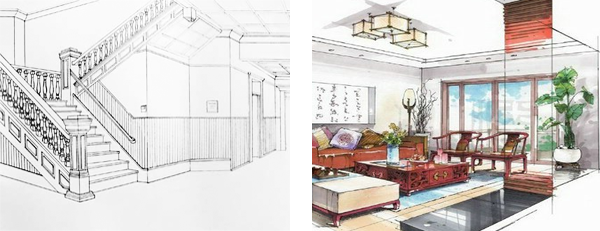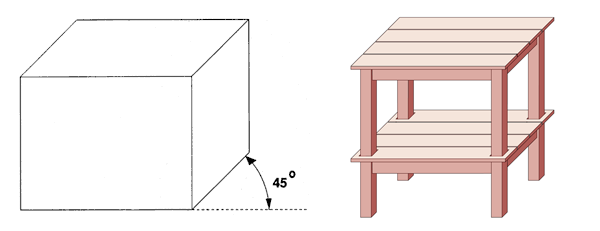Articles on : INFORMATION Interior Design Drawing Techniques READ HERE
Article link : INFORMATION Interior Design Drawing Techniques READ HERE
Article design drawing, Article drawing, Article drawing techniques, Article Interior, Article Interior Design, Article Interior Design Drawing Techniques, Article interior styles, Article interior tips, Article interiors,
INFORMATION Interior Design Drawing Techniques READ HERE
Interior designers develop their ideas from relationship diagrams into floor plans and then into perspective drawings to show clients. With 2D floor plans it can be difficult to visualise how they will look in reality so perspective drawings are ideal as they represent three-dimensional images on a two-dimensional picture plane.According to Leonardo da Vinci there are three aspects to perspective. The first has to do with how the size of objects seems to diminish according to distance. The second, is the manner in which colors appear to change the farther away they are from the eye. The third defines how objects should to be finished less carefully (blur) the farther away they are.
There are numerous different techniques used to achieve perspective in drawings, of which, the main ones are listed below.
One point perspective drawing:
 |
| One Point Perspective Drawing Samples |
One point perspective is so named because it uses a single vanishing point to draw an object. In one point perspective, perspective is created by showing the front and one side of an object with all the horizontal lines joining a single vanishing point. If more than two surfaces of an object need to be shown two point perspective can be used.
In one point perspective, the front and back planes of the box always remain parallel to the picture plane. Only their scale changes as they recede into the distance. To create a template of a room for a one point perspective, follows these steps...
- First, using a pencil and a ruler, lightly make an X by connecting the right top corner to the left bottom corner of your paper and by connecting the top left corner to the bottom right. Where these lines intersect will be your point that all depth lines will 'move' toward.
- Next, lightly make a rectangle on the X, be sure to make the vertical lines and horizontal lines of the rectangle parallel to the sides of the paper. This will represent the back wall of the room.
- To assist in gauging depth for items in the room, draw a line diagonally from either bottom corner of the rectangle to the opposite front corner of the page.
- To create lines for floor boards or floor tiles you can lightly draw lines from equally spaced points at the bottom of the page straight to the centre point.
Your room template should now look something like this...
| One Point Perspective Template |
Two point perspective drawing:
 |
| Two Point Perspective Drawing Samples |
- First mark two vanishing points on the paper (closer to the edges will allow for larger drawings) and faintly draw a line between them, we will call this is called the horizon line
- Next draw a vertical line above, through or beneath the horizon line (depending on the angle and position of the drawing you want) and in the centre between the vanishing points, this represents one side/edge of the object you are drawing
- Now draw faint lines from the ends of the vertical line to the vanishing points, these are the perspective lines.
- Next draw two more vertical lines either side of your original vertical and between the perspectives lines to represent the othe edges of the object. This creates two sides of the object.
- Next draw faint guidelines from the ends of these new lines to either vanishing point which will create the top of the object. It will now look like a cube in perspective.
- For more detail continue to add lines remembering they always move toward the vanishing points
Oblique drawing:
 |
| Oblique Drawing Perspective Sample |
- Draw the front of the object straight on as you would do in a front plan view.
- Now extend guide lines out from the top left, top right and bottom right corners ar 45 degrees.
- Measure along the bottom right guidline to the distance of the width/depth of the object you are drawing and mark that point
- From that point draw a perpendicular line up until you meet the top right guide line you drew earlier. This perpendicular line should be parallel to the left and right edges of your front face.
- Now, from where this line intersected the top right guide line draw a straight line across towards the top left guide line parellel to the top edge of your front face. Stop when you touch the top left guide line.
- This should complete the basic shape in oblique view. If there are angles/areas of the shape additional to the basic shape or removed from this shape, as with the chair image above, then continue to block them out using the base shape as a guide.
Isometric drawing:
 |
| Isometric Perspective Drawing Samples |
Isometric projection is another form of graphical projection use for the visual representation of three-dimensional objects in two dimensions. The term isometric comes from the Greek for "equal measure", reflecting that the scale along each axis of the projection is the same In any isometric representation, all measurements are to scale, no matter how far close or how far in the distance they are in view. In an isometric perspective, you have a 3D view where, no matter where you are in that space, the object scaling retains its value and doesn't change. Isometric projection can be visualized by considering the view of a cubical room from an upper corner, looking towards the opposite lower corner. The x-axis is diagonally down and right, the y-axis is diagonally down and left, and the z-axis is straight up. Depth is also shown by height on the image. Lines drawn along the axes are at 120 degrees to one another (diagonal lines will therefore be at 30 degrees to the horizontal and at 60 degrees to the vertical).
Axonometric drawing:
 |
| Axonometric Perspective Drawing Samples |
Axonometric or planometric as it is sometimes known is a method of drawing a plan view with a third dimension. It is used by interior designers, architects and landscape gardeners. Axonometric works by drawing a plan view at a 45 degree angle with the depth added vertically. All lengths are drawn as their true lengths unlike when you use oblique. This gives the impression that you are viewing the objects from above. One advantage of axonometric is that circles drawn on the top faces of objects can be drawn as a normal circle.
Also finished article INFORMATION Interior Design Drawing Techniques READ HERE
Thus our discussion about INFORMATION Interior Design Drawing Techniques READ HERE, may be useful for all of you in looking for the latest models of the house.
You're reading an article INFORMATION Interior Design Drawing Techniques READ HERE with a link that you can save https://newhomedesignminimalist1.blogspot.com/2016/02/information-interior-design-drawing.html I hope the article is about could be useful to you.
Tag : design drawing, drawing, drawing techniques, Interior, Interior Design, Interior Design Drawing Techniques, interior styles, interior tips, interiors,
0 Response to "INFORMATION Interior Design Drawing Techniques READ HERE"
Posting Komentar